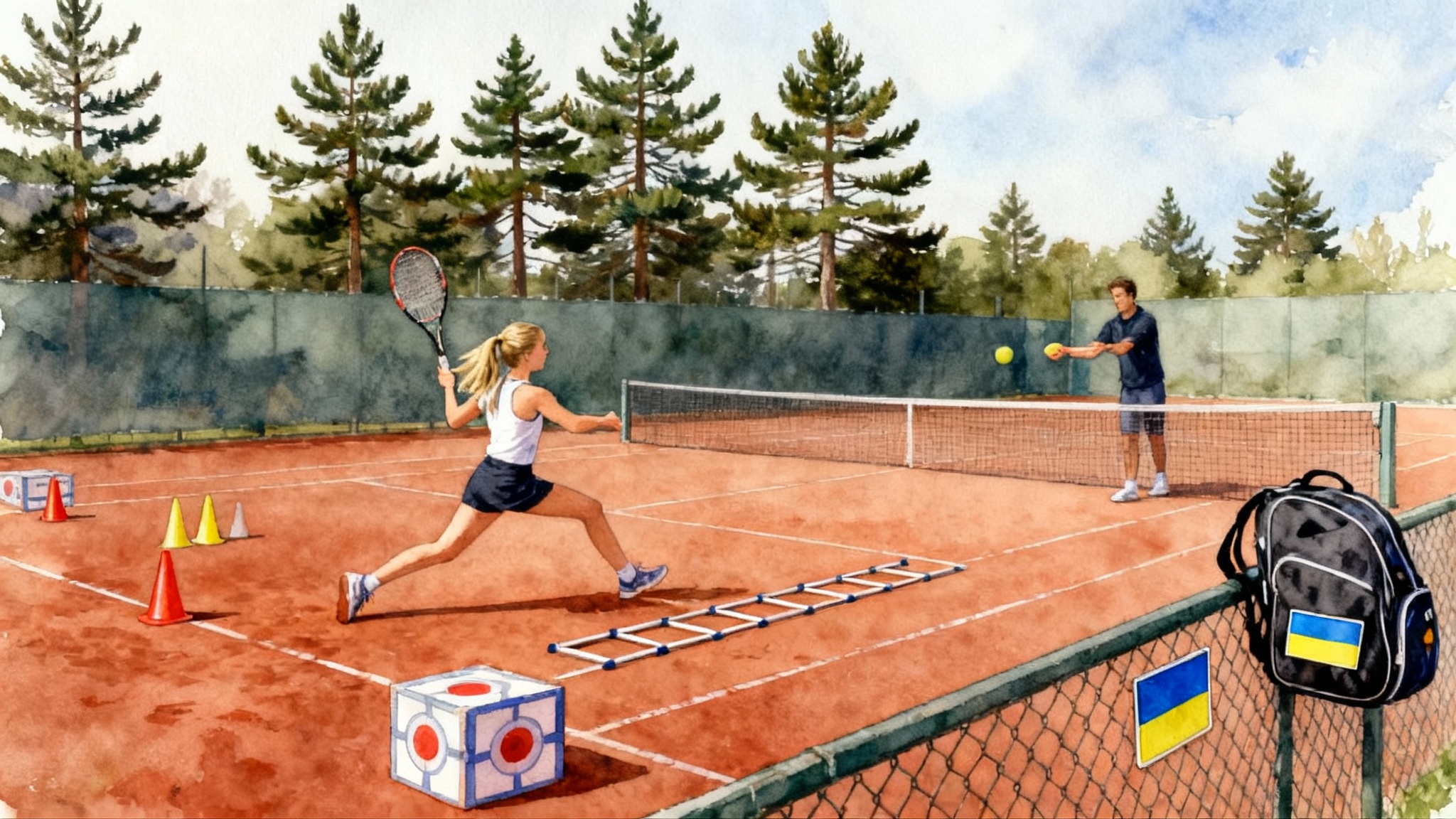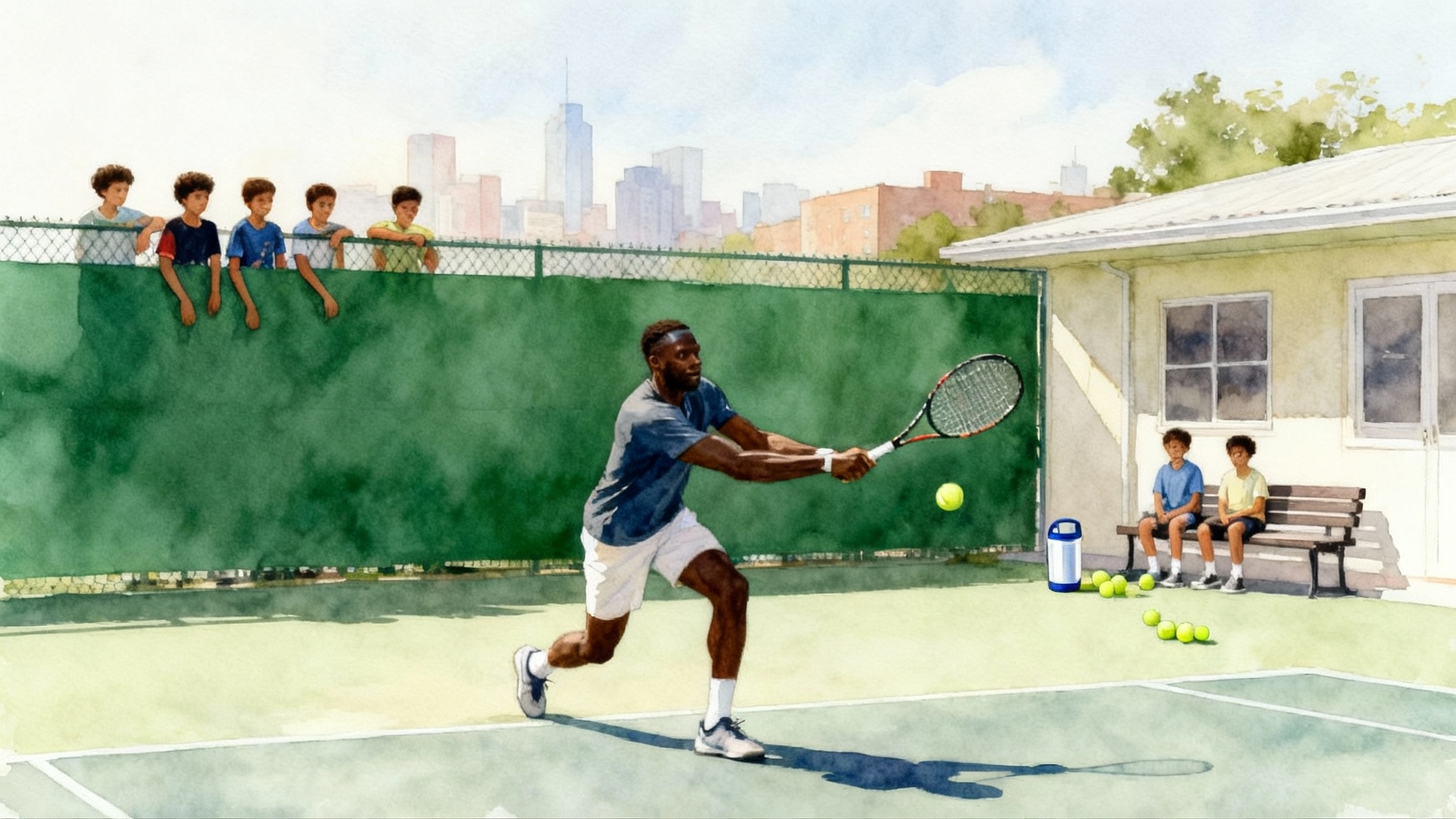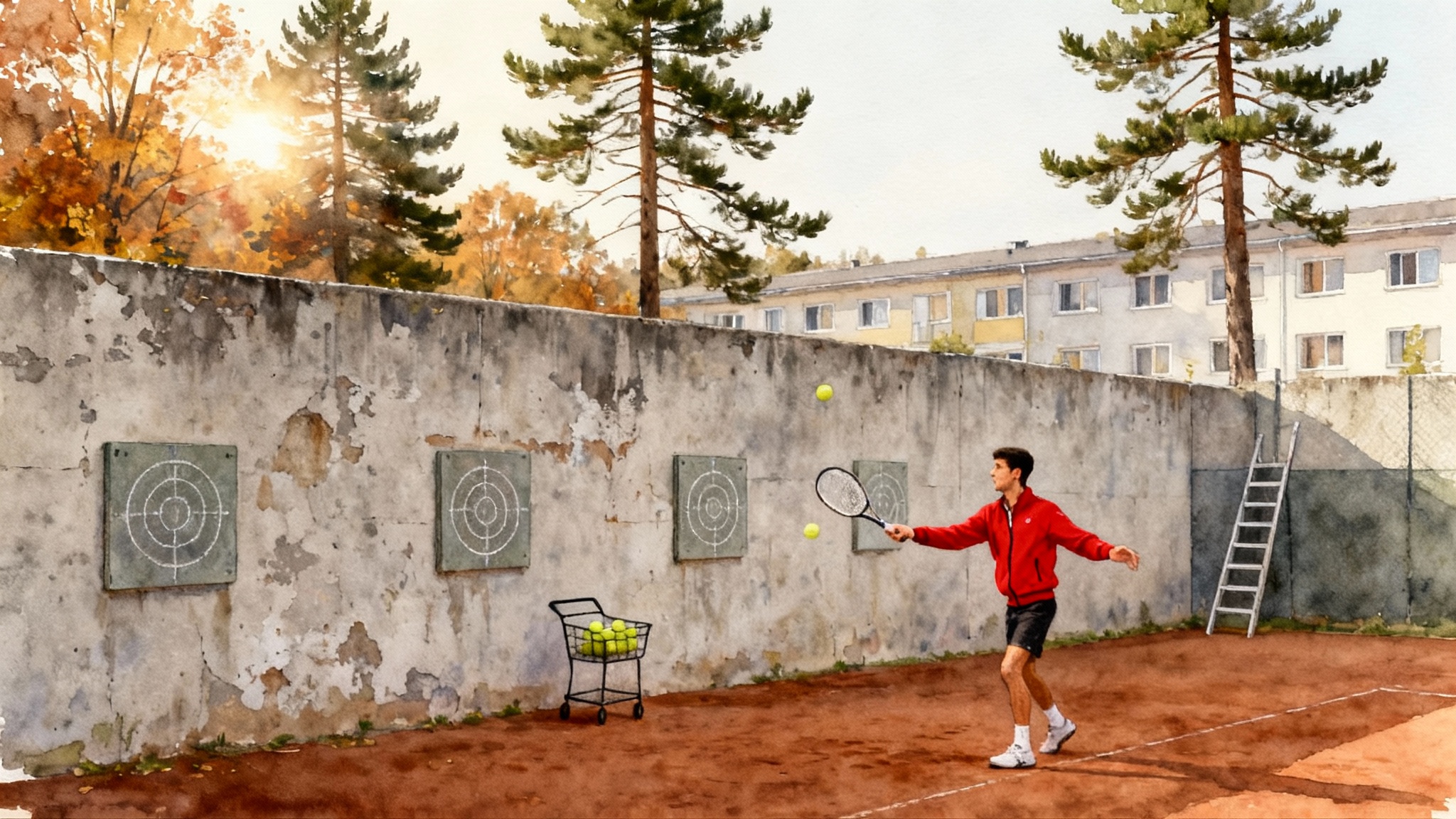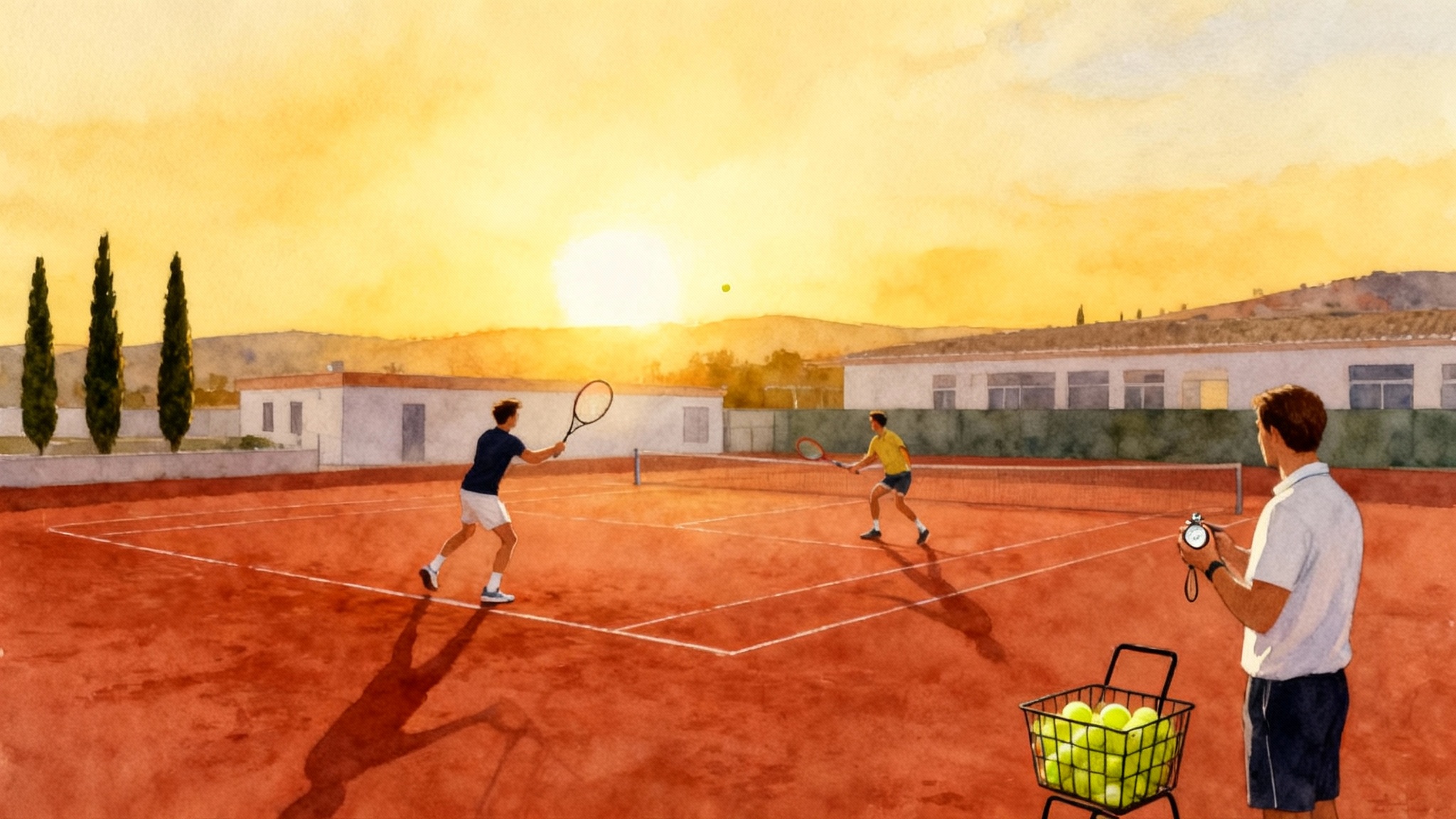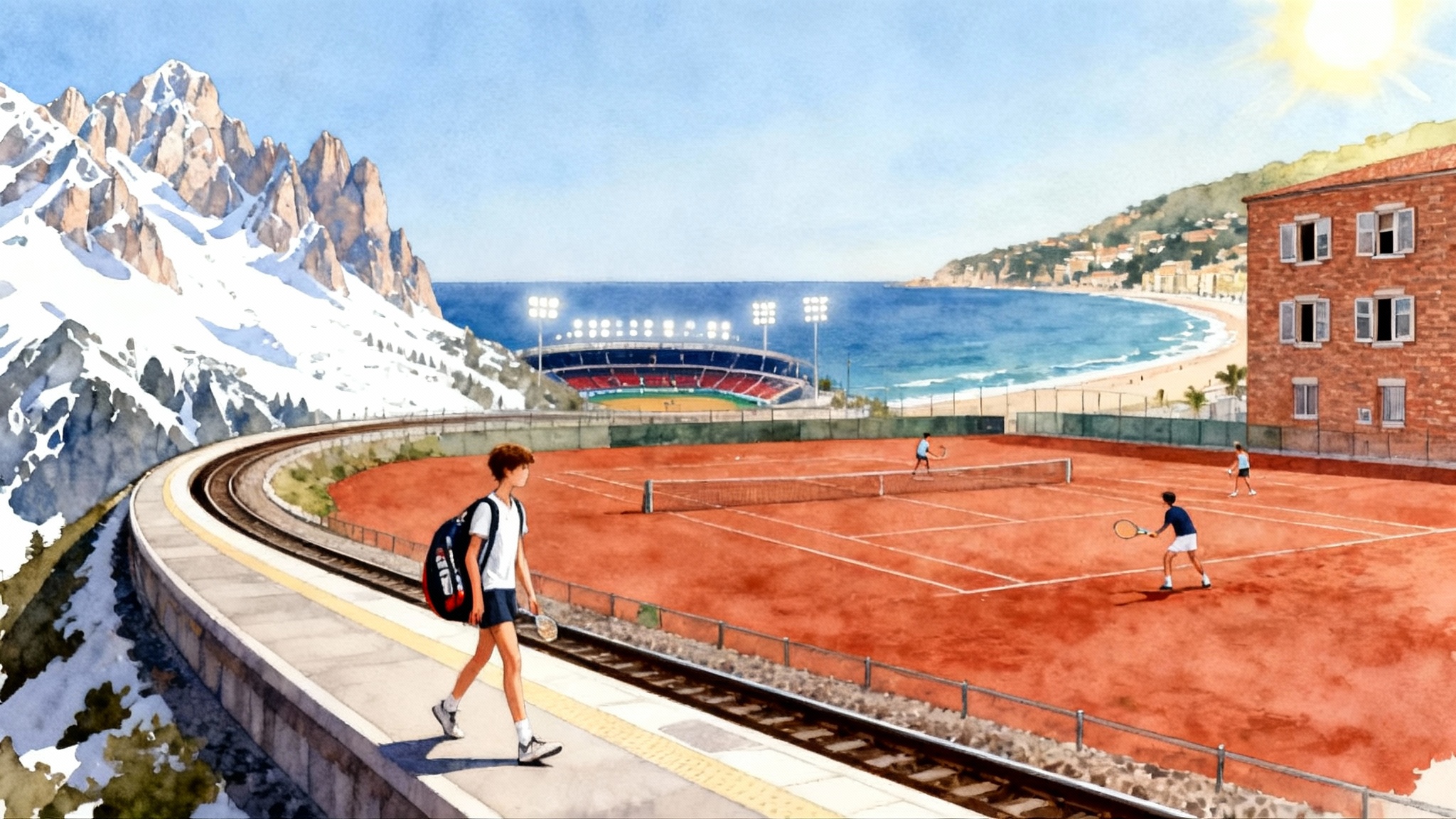LTP Charleston to WTA Top Tier: Emma Navarro’s Blueprint
How Emma Navarro’s years with coach Peter Ayers at Charleston’s LTP Academy, plus a strategic two-year stop at the University of Virginia, turned green-clay habits and small-group reps into top tier momentum on tour.
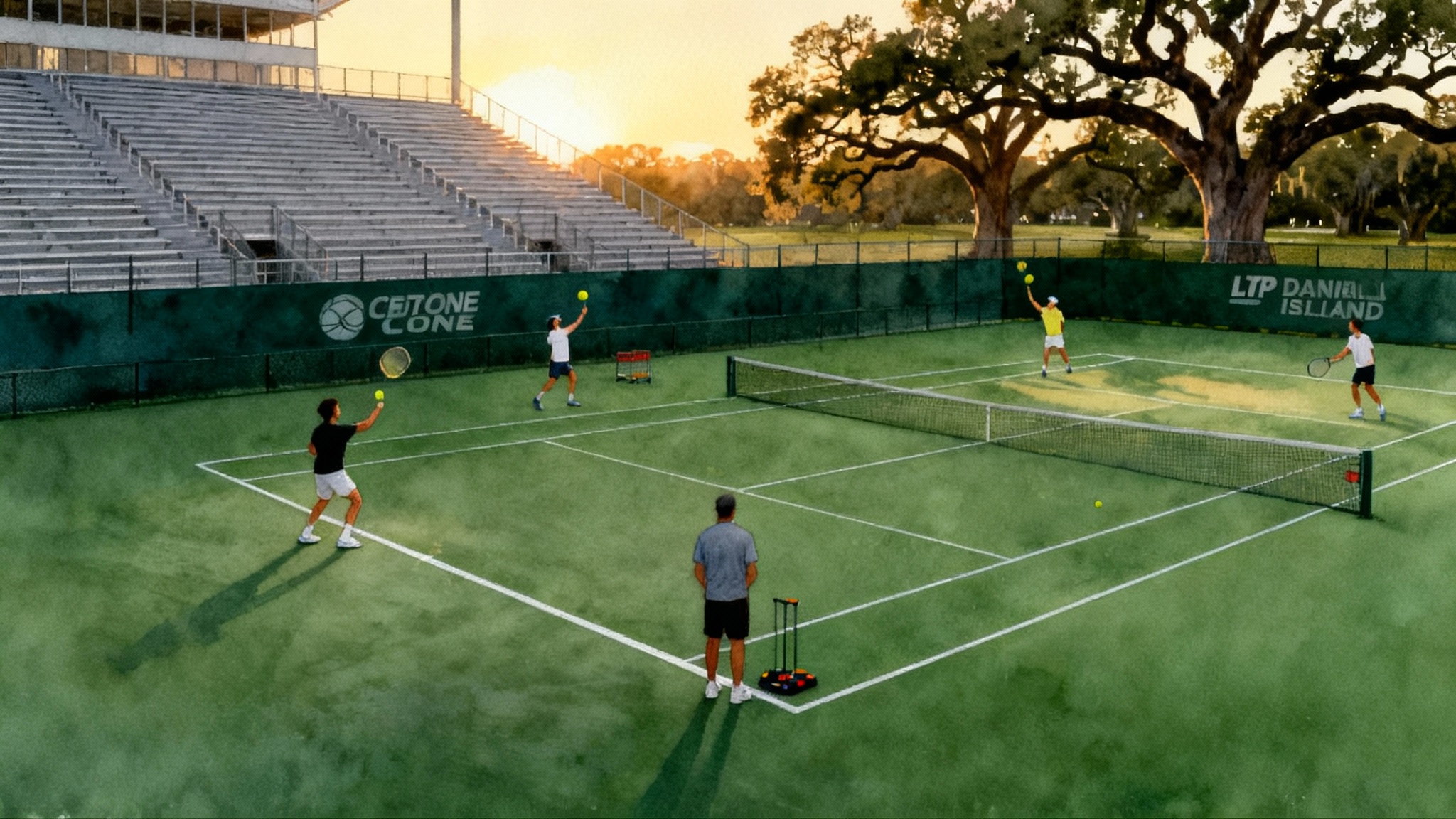
The Charleston formula behind a top tier breakthrough
If you watched Emma Navarro race up the rankings in 2024 and 2025, it looked sudden. It was not. Her rise lives in the details of a local system: a single coach who spoke the same training language for years, a community academy that prizes reps over theatrics, a schedule that sharpened strengths, and a smart two-year stop in college that acted like a springboard. Put those parts together and you get a blueprint that many families can adapt, even if they never step foot in Charleston. For comparison points, see how other pathways codify similar principles in our breakdown of Madison Keys’ Evert Academy model.
At the center is a long relationship with coach Peter Ayers, cultivated at LTP Academy on Daniel Island and Mount Pleasant. That continuity bridged her junior years, two seasons at the University of Virginia, and her first full years on the Hologic Women’s Tennis Association tour. The results are plain in her rapid momentum, including a first tour title in 2024 and a bigger one in early 2025, plus a climb that placed her among the world’s best. The official record of her coaching continuity and career milestones is spelled out on her WTA player profile.
This article breaks down what LTP’s model actually looks like on court and in the gym, why a home tournament calendar matters, and how a targeted stint in college can accelerate a pro career. Then we turn those lessons into a decision framework any family can use.
One coach, one language: Peter Ayers at LTP
The most underrated competitive advantage in junior development is not a piece of equipment or a secret drill. It is a stable translation layer between ideas and execution. Navarro and Ayers built that from the time she was a young teen. One coach who knows the player’s patterns, stress responses, and learning style can compress feedback loops. When the player hears the same cue in the same words across months and years, the body learns to act before the mind overthinks.
Consider a common growth point: closing the court after a deep crosscourt backhand. With a new voice every six months, the instruction changes tone and terminology. The player spends weeks re-learning the language, not the movement. With one voice, the cue stays consistent. The reps multiply. Confidence builds because the player knows what good feels like.
That is the practical power of coach continuity. It turns practice from a series of experiments into a compounding asset.
Why green clay volume matters
Charleston is one of the few American hubs where juniors log serious time on green clay. Green clay is slightly faster than European red clay, yet it still rewards sliding, balance, recovery steps, and point construction. Training on it in heavy volume has three concrete benefits:
- Endurance with purpose: Long rallies demand patterns. Players learn how to make a point last long enough to create a high percentage ball instead of forcing a winner too soon.
- Footwork literacy: Sliding is not a trick. It is braking and accelerating in one motion. Green clay teaches that rhythm earlier because the surface invites it.
- Body resilience: The surface is more forgiving than asphalt, which lets players stack more repetitions without the same joint cost. That means more live-ball hours in a week and more match play across a season.
Charleston’s professional calendar reinforces those habits. The city hosts the Credit One Charleston Open on green clay each spring, and LTP facilities run pro and challenger events throughout the year. For a player built on green clay, April in Charleston is not a disruption. It is home.
Small groups, big reps
LTP’s training culture puts the ratio ahead of the logo. Small groups turn every drill into a density play: more balls struck per minute, more coach eyes on each rep, more accountability among peers. Certain LTP programs advertise three-to-one player to coach ratios in select intensives, and even entry clinics have capped groups with explicit coach to player limits. The spirit is the same across levels: keep the cohort small enough to see and fix the details, then scale volume without losing quality.
Here is how that looks on a weekday block:
- 20 minutes of serve patterns with a target map taped on the deuce and ad courts. Players call the serve before tossing, then must hit the second ball to a defined plus-one window.
- 25 minutes of crosscourt forehand tolerance where a player must build to a neutral ball, then change direction only off a shoulder-high contact. Coaches count quality changes, not total changes, and reset if the pattern breaks.
- 20 minutes of approach-and-close, starting with a deep neutral ball and finishing inside the service line, with one volley and one overhead. If the approach floats, the rep does not count.
Small groups let a coach track reps and quality far more cleanly than a packed court. The athlete leaves knowing exactly which pattern met the standard and which one did not.
Integrated fitness that equals tennis fitness
At LTP, fitness is not a separate checkbox after practice. It is woven into the session flow. Camps and high performance blocks explicitly combine on-court training, competitive play, and structured fitness. That matters because general strength does not automatically become tennis speed. Tennis speed is the ability to start, stop, and start again with balance.
A typical integration day pairs footwork ladders and resisted sprints with live-ball drills that punish slow first steps. Medicine ball throws precede backhand drive volleys to sync hip rotation with shoulder stability. Mobility work focuses on ankles and hips to support sliding and recovery. The gym and the court talk to each other so that strength shows up where it counts: the split step and the first push.
The smart detour: two-year Virginia launchpad
Navarro’s two seasons at the University of Virginia were not a pause. They were a controlled acceleration. College tennis compresses travel, packs dual matches into reliable weekly rhythms, and surrounds a player with daily competition without the isolation of the road. At Virginia, Navarro picked up high-stakes reps in team settings while continuing to work from the same technical base. She left with an individual national title in hand, a more mature match identity, and a body hardened by hundreds of scoreboard pressure points.
From a development lens, that two-year window delivered three advantages:
- A safe proving ground for patterns: The player can test new serve plays or return positions inside a team dual match where support is immediate and the schedule is packed with matches.
- Leadership reps: College lineups force players to manage momentum shifts. That emotional literacy is valuable on tour where there is no coach on the court between points.
- Load management: College teams coordinate strength and on-court work so the athlete peaks for conference and national events. Learning that rhythm makes the tour calendar less chaotic later.
Home-court competition as a multiplier
Charleston’s tournament density let Navarro compete at home across levels, from junior championships to professional events. Playing high-level matches in your own time zone, sleeping in your own bed, and seeing familiar faces in the stands is not a soft perk. It reduces travel friction so you can invest energy in performance. LTP has hosted the USTA Girls’ 18s National Clay Court Championships in Charleston, and Navarro won that title at home in 2018, an early proof of concept for the home-field model. See the recap of champions from that year in this USTA Girls’ 18s champions article. Similar home-ground acceleration shows up in Coco Gauff’s Champ’Seed path.
On the professional side, the city’s calendar includes Women’s Tennis Association 125 and International Tennis Federation events at LTP venues. That means meaningful ranking points without long-haul flights. For a player with a green-clay identity, those weeks are not detours. They are accelerators.
How it translated in 2024–2025
When a player spends her formative years on a surface that rewards patterns, with a coach who repeats the same language, and in a community that supplies frequent home matches, the jump to tour-level execution happens faster.
- Serve plus one: Navarro’s first-strike patterns grew crisper. You could see the deuce wide serve followed by the forehand to the open court repeated with confidence, especially on slicker hard courts where the green-clay footwork carried over as balance rather than caution.
- Return organization: On second serves, she stepped inside the baseline to take time away, a habit built in practice sets that demanded immediate pressure, not passive rallies.
- Transitional courage: The hours of approach-and-close work showed up as willingness to move forward on any short ball, a must for winning on faster surfaces.
Those patterns aligned with results: a first tour title in January 2024, a bigger trophy in early 2025, and deep runs at the majors. The peaks were not flukes. They were the natural output of a system that built sturdy habits, then put those habits under stress on a schedule that suited her strengths.
Practical takeaways for families
You do not need a Charleston zip code to use this blueprint. Here is how to translate the lessons into decisions.
1) Choosing a local academy over boarding
When to choose local:
- You can secure coach continuity for at least two years. One primary coach will manage the plan and attend a meaningful share of tournaments.
- The academy can deliver small ratios on your player’s key sessions. Ask for specific numbers, not slogans. Ideal is three to one or four to one for pattern work.
- There is a realistic home calendar of events that fit your player’s age and ranking, including junior championships, Universal Tennis Rating events, and if appropriate, professional qualifiers.
Why it works:
- Lower travel friction means more practice hours and more consistent sleep. That compounds.
- Community support is real. Scrimmage partners, hitting lists, and local fitness pros add redundancy so training survives busy weeks or illness.
How to do it:
- Audit the court-to-coach ratio. Visit sessions unannounced, watch the rep count per player, and note how often a coach uses a specific technical cue with the same words.
- Map a six-month local tournament plan before you commit. If the calendar is a desert, boarding may be better. See a community-led example in our Empire Tennis Academy profile.
When boarding makes sense:
- You cannot lock in a primary coach locally, or the only options are high-ratio clinics with little individual feedback.
- Your player needs weekly match volume that the home city cannot supply.
2) Using college as a launchpad
Why college can accelerate development:
- Regular, high-pressure points in a team context build competitive stamina.
- Coordinated strength and conditioning with on-court sessions reduces injury risk while raising training density.
How to do it:
- Target programs where the head coach embraces professional development, not just college results. Ask to see how they taper workloads before big events and how they integrate nutrition, sports medicine, and mental skills.
- Plan the exit ramp. If the goal is two years, align academic planning and credits early so leaving for the tour does not create chaos.
What to watch for:
- Style fit. If a player’s game depends on first-strike offense, a program that prizes 20-ball rallies may create mixed signals.
3) Crafting a tournament schedule around strengths
Principle: Match the surface and geography to the player’s training base. If your player grew up on green clay, prioritize early spring events on clay and limit jet lag.
How to do it:
- Build mini blocks. Two or three events in the same region with one recovery week beats a zigzag of single events across continents.
- Place home events strategically. Use familiar venues to consolidate new patterns or debut a technical tweak under pressure.
Measure what matters:
- Track break point conversion, first ball errors after serve or return, and rally length on points you win versus points you lose. Use those numbers to adjust the calendar.
4) Build a durable support ecosystem around one primary coach
Why this matters:
- Specialists are valuable, but the primary coach must be the integrator. Without a single point of integration, you get contradictions. Contradictions cost confidence.
How to do it:
- Define roles in writing. The primary coach controls the training plan and calls the final play on technical changes. Fitness and medical staff align to that plan.
- Hold quarterly reviews. The team meets every three months to assess metrics, travel load, and wellness. Adjust the plan, not the principles.
- Keep the language consistent. If a new specialist uses different cues, translate them to the player’s existing vocabulary.
What families can copy from the LTP model
- Volume on a forgiving surface to grow patterns and resilience.
- Small-group structures that privilege quality and accountability.
- Integrated fitness that shows up in the split step and first push.
- A home calendar that supplies real matches without expensive travel.
- One coach who knows the player well enough to make simple, decisive calls.
A closing thought
Navarro’s surge did not come from a shortcut. It came from a community that stacked sensible choices for years. A stable voice in Peter Ayers. Countless balls struck on green clay. Small groups that made every rep count. College tennis used as a launcher, not a parking lot. Home events that reduced friction so performance could breathe.
Families do not control talent. They do control structure. Choose one coach you trust, secure small-group reps that double your volume, place your player in events where their strengths translate, and view college as a tool, not a detour. Build locally, and let the results travel.

